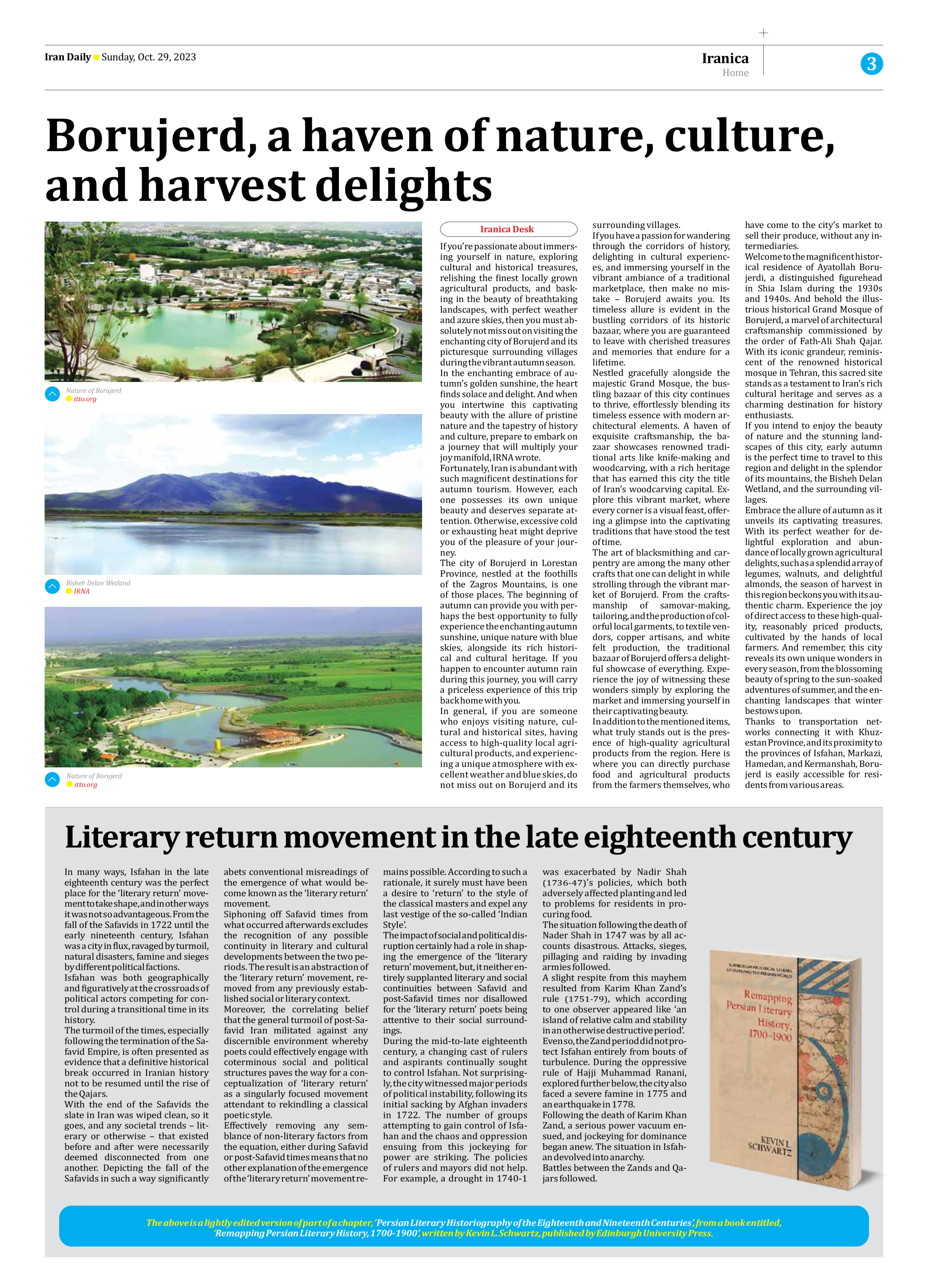
Literary return movement in the late eighteenth century
In many ways, Isfahan in the late eighteenth century was the perfect place for the ‘literary return’ movement to take shape, and in other ways it was not so advantageous. From the fall of the Safavids in 1722 until the early nineteenth century, Isfahan was a city in flux, ravaged by turmoil, natural disasters, famine and sieges by different political factions.
Isfahan was both geographically and figuratively at the crossroads of political actors competing for control during a transitional time in its history.
The turmoil of the times, especially following the termination of the Safavid Empire, is often presented as evidence that a definitive historical break occurred in Iranian history not to be resumed until the rise of the Qajars.
With the end of the Safavids the slate in Iran was wiped clean, so it goes, and any societal trends – literary or otherwise – that existed before and after were necessarily deemed disconnected from one another. Depicting the fall of the Safavids in such a way significantly abets conventional misreadings of the emergence of what would become known as the ‘literary return’ movement.
Siphoning off Safavid times from what occurred afterwards excludes the recognition of any possible continuity in literary and cultural developments between the two periods. The result is an abstraction of the ‘literary return’ movement, removed from any previously established social or literary context.
Moreover, the correlating belief that the general turmoil of post-Safavid Iran militated against any discernible environment whereby poets could effectively engage with coterminous social and political structures paves the way for a conceptualization of ‘literary return’ as a singularly focused movement attendant to rekindling a classical poetic style.
Effectively removing any semblance of non-literary factors from the equation, either during Safavid or post-Safavid times means that no other explanation of the emergence of the ‘literary return’ movement remains possible. According to such a rationale, it surely must have been a desire to ‘return’ to the style of the classical masters and expel any last vestige of the so-called ‘Indian Style’.
The impact of social and political disruption certainly had a role in shaping the emergence of the ‘literary return’ movement, but, it neither entirely supplanted literary and social continuities between Safavid and post-Safavid times nor disallowed for the ‘literary return’ poets being attentive to their social surroundings.
During the mid-to-late eighteenth century, a changing cast of rulers and aspirants continually sought to control Isfahan. Not surprisingly, the city witnessed major periods of political instability, following its initial sacking by Afghan invaders in 1722. The number of groups attempting to gain control of Isfahan and the chaos and oppression ensuing from this jockeying for power are striking. The policies of rulers and mayors did not help. For example, a drought in 1740-1 was exacerbated by Nadir Shah (1736-47)’s policies, which both adversely affected planting and led to problems for residents in procuring food.
The situation following the death of Nader Shah in 1747 was by all accounts disastrous. Attacks, sieges, pillaging and raiding by invading armies followed.
A slight respite from this mayhem resulted from Karim Khan Zand’s rule (1751-79), which according to one observer appeared like ‘an island of relative calm and stability in an otherwise destructive period’.
Even so, the Zand period did not protect Isfahan entirely from bouts of turbulence. During the oppressive rule of Hajji Muhammad Ranani, explored further below, the city also faced a severe famine in 1775 and an earthquake in 1778.
Following the death of Karim Khan Zand, a serious power vacuum ensued, and jockeying for dominance began anew. The situation in Isfahan devolved into anarchy.
Battles between the Zands and Qajars followed.
The above is a lightly edited version of part of a chapter, ‘Persian Literary Historiography of the Eighteenth and Nineteenth Centuries’, from a book entitled,
‘Remapping Persian Literary History, 1700-1900’, written by Kevin L. Schwartz, published by Edinburgh University Press.







